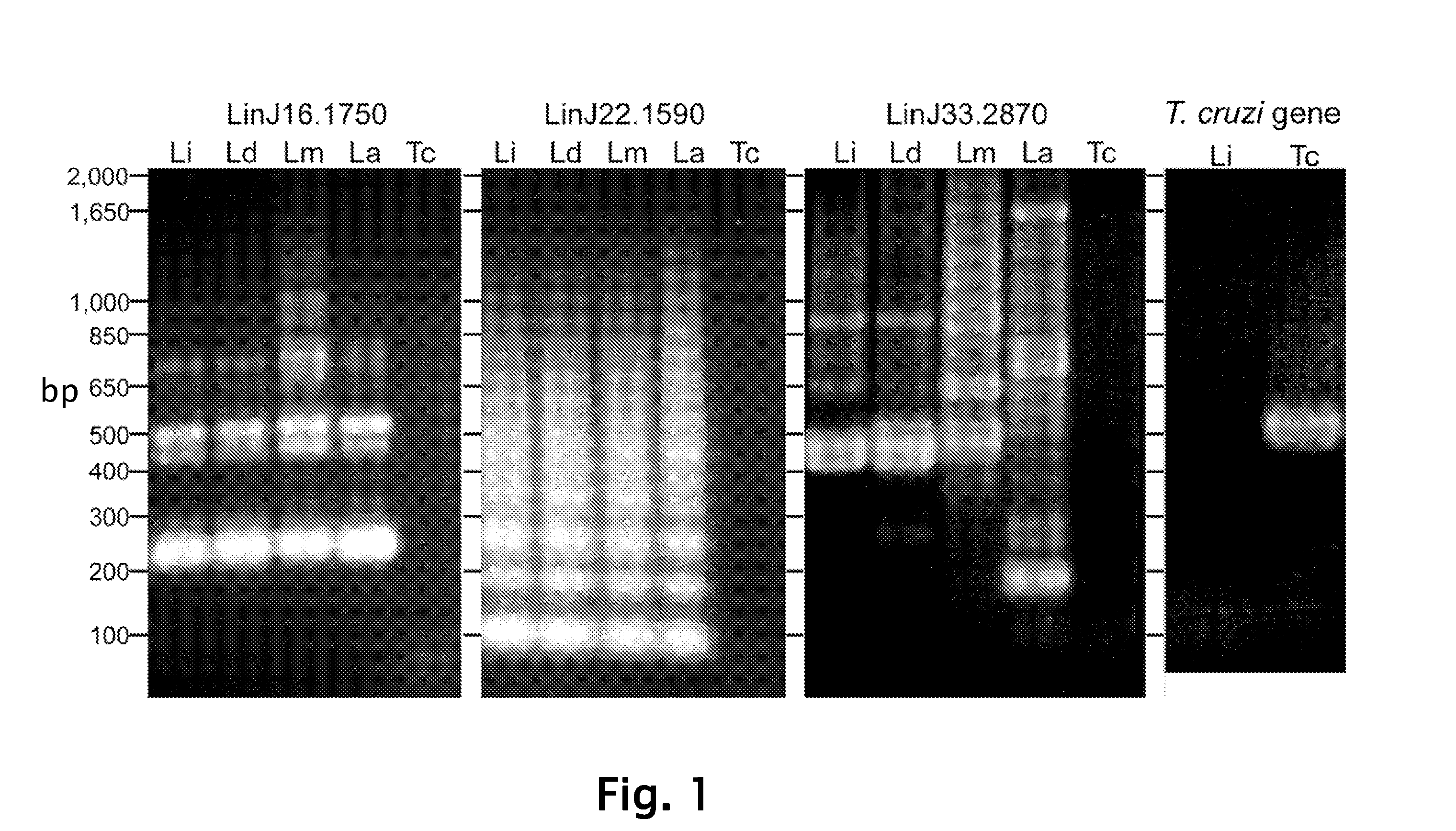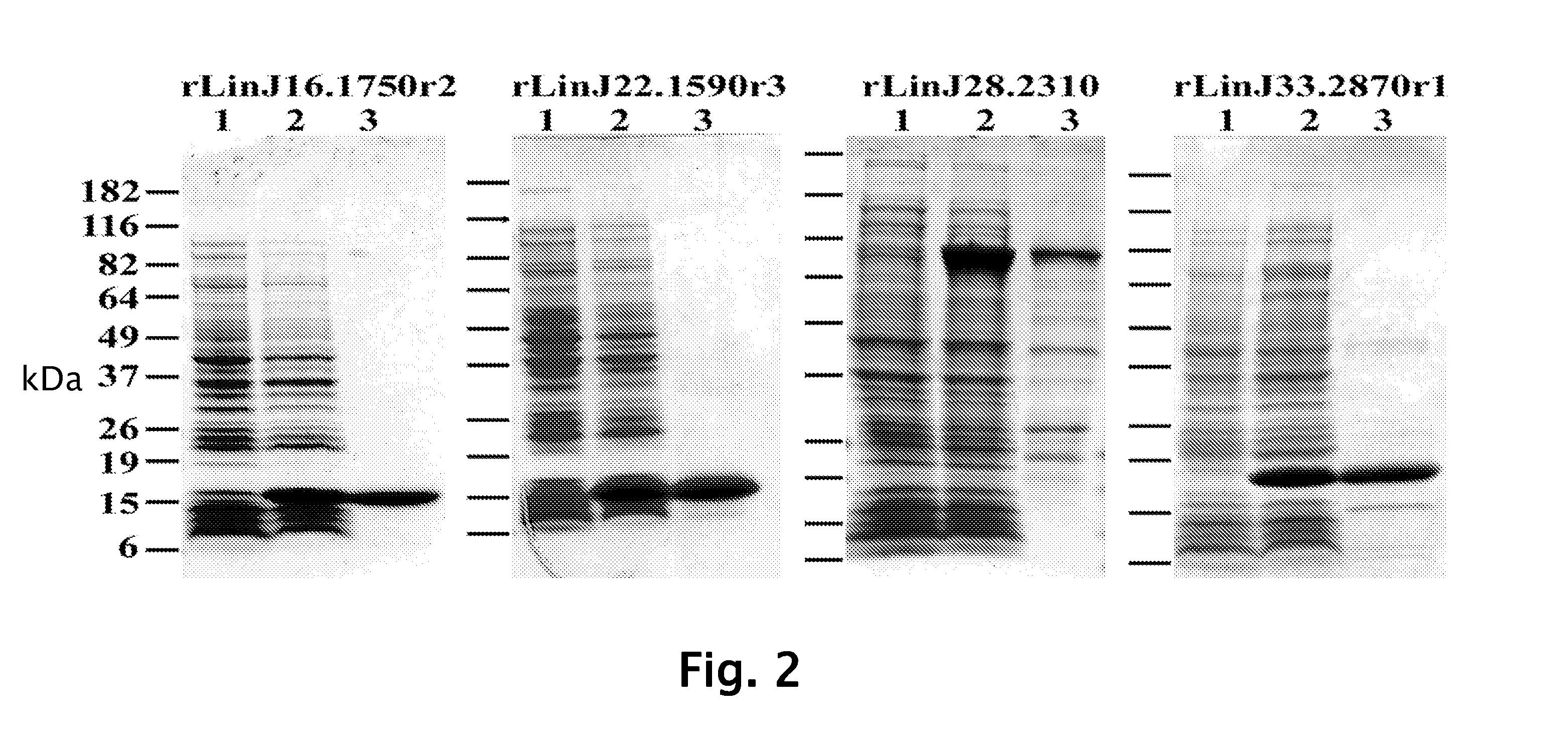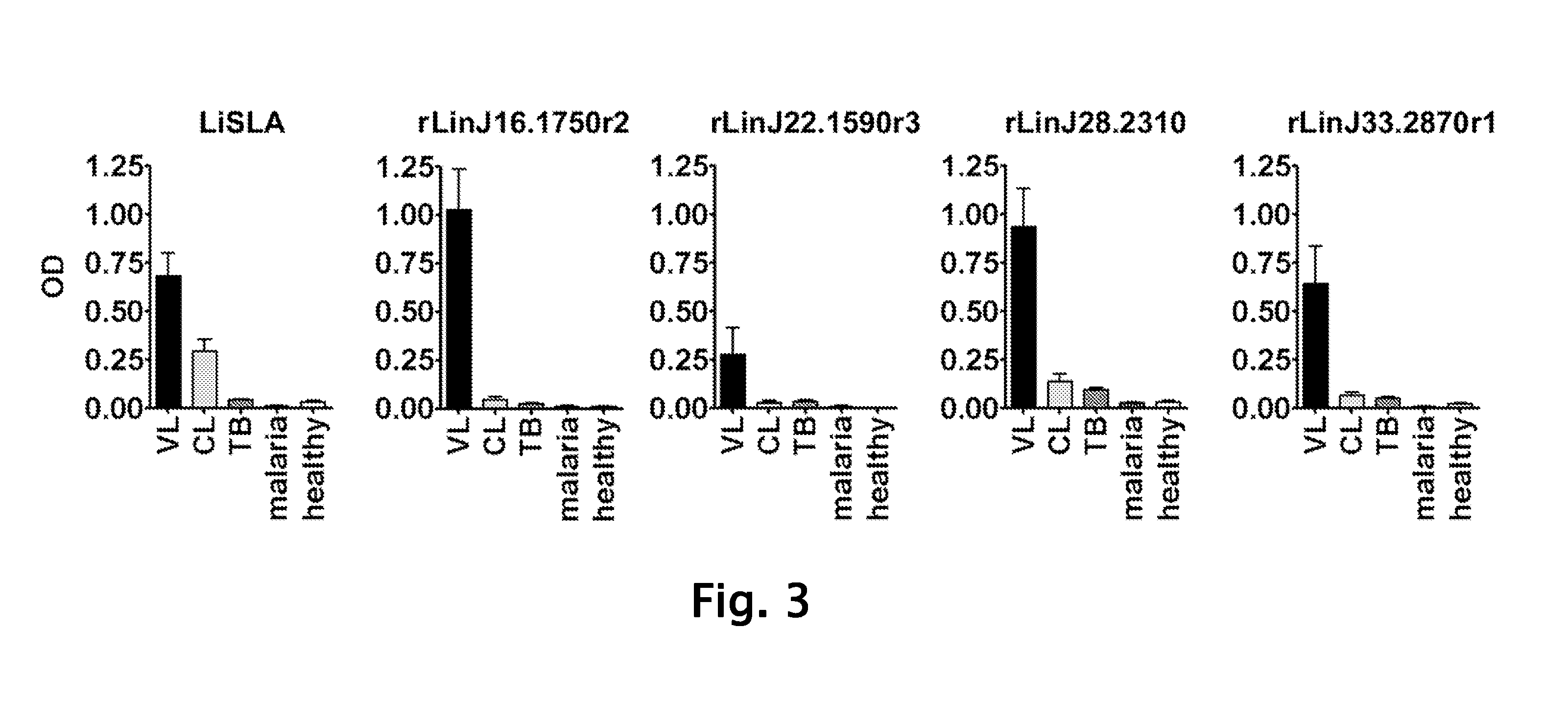Compounds and methods for diagnosis and treatment of leishmaniasis
a technology for leishmaniasis and compound compounds, applied in the field of leishmaniasis serodiagnosis, can solve the problems of no vaccines or effective treatments currently available, leishmaniasis is a serious problem, and the disease is difficult to detect with standard techniques
- Summary
- Abstract
- Description
- Claims
- Application Information
AI Technical Summary
Benefits of technology
Problems solved by technology
Method used
Image
Examples
example 1
Parasite and Infection of Hamsters
[0107]Leishmania infantum, Leishmania donovani, Leishmania major, Leishmania amazonensis and Trypanosoma cruzi were used to infect Hamsters and thereby produce infected sera. Hamsters were infected intracardiacally with 1×107 Leishmania infantum, Leishmania donovani, Leishmania major, Leishmania amazonensis or Trypanosoma cruzi promastigotes in a stationary phase. After eight to twelve weeks the infected hamsters were sacrificed and the sera were collected.
example 2
Patient Sera
[0108]Sudanese visceral leishmaniasis patient sera were collected from patients with active disease diagnosed clinically and proven parasitologically. Patient sera of cutaneous leishmaniasis (Brazil), tuberculosis (USA) and malaria (Brazil) were collected from well-characterized patients, including parasitological diagnosis (cutaneous leishmaniasis, malaria) or culture positive diagnosis (tuberculosis). Normal sera were obtained from healthy individuals in the United States.
example 3
Serological Screening of L. infantum Expression Library
[0109]Construction and screening of library was performed. In brief, total DNA from L. infantum was randomly sheared by sonication to an average size of ˜2 kb, blunt ended with T4 DNA polymerase, and followed by the addition of EcoRI adaptors. The insert was subsequently ligated into the ZAP Express© vector predigested with EcoRI (Stratagene, La Jolla, Calif.) and packaged using Gigapack III© Gold Packaging Extract (Stratagene). The phage library was amplified and then screened according to the manufacturer's instruction with pooled L. infantum-infected hamster sera or pooled Sudanese visceral leishmaniasis patient sera described above. Approximately 5×105 plaques were screened using the sera at a dilution of 1:100 and immunoreactive plaques were detected with the alkaline phosphatase-conjugated goat anti-hamster IgG or goat anti-human IgG (KPL, Gaithersburg, Md.) and the substrate, BCIP / NBT (KPL). PBK-CMV phagemid vectors were ...
PUM
| Property | Measurement | Unit |
|---|---|---|
| Ka | aaaaa | aaaaa |
| Ka | aaaaa | aaaaa |
| Ka | aaaaa | aaaaa |
Abstract
Description
Claims
Application Information
 Login to View More
Login to View More - R&D
- Intellectual Property
- Life Sciences
- Materials
- Tech Scout
- Unparalleled Data Quality
- Higher Quality Content
- 60% Fewer Hallucinations
Browse by: Latest US Patents, China's latest patents, Technical Efficacy Thesaurus, Application Domain, Technology Topic, Popular Technical Reports.
© 2025 PatSnap. All rights reserved.Legal|Privacy policy|Modern Slavery Act Transparency Statement|Sitemap|About US| Contact US: help@patsnap.com



